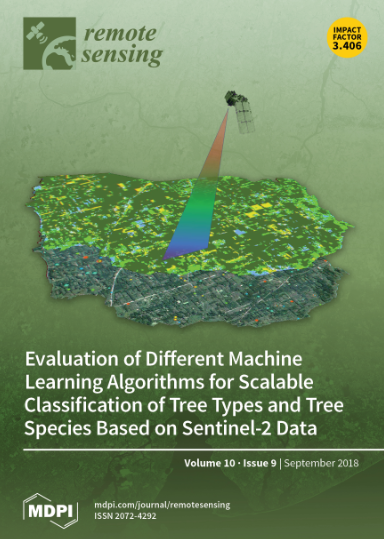利用机器学习和遥感技术分析智利南部兰科湖的水质
IF 4.2
2区 地球科学
Q2 ENVIRONMENTAL SCIENCES
引用次数: 0
摘要
本研究考察了位于智利南部的一个南美湖泊的湖泊学参数的动态变化,目的是通过整合遥感和机器学习技术,预测作为藻类生物量和水质关键指标的叶绿素-a 水平。研究采用了四种先进的机器学习模型(递归神经网络(RNN)、长短期记忆(LSTM)、递归门单元(GRU)和时序卷积网络(TCN)),重点估算兰科湖三个采样站的叶绿素-a浓度。数据时间跨度为 1987 年至 2020 年,分为三种不同情况:仅使用原位数据(情况 1)、使用原位数据和气象数据(情况 2)、使用原位数据、气象数据以及来自 Landsat 和哨兵任务的卫星数据(情况 3)。在所有情况下,每个机器学习模型都表现出强劲的性能,在预测叶绿素-a 浓度方面取得了可喜的成果。在这些模型中,LSTM 是最有效的,其估算指标也是最好的,表现最好的是案例 1,R2 = 0.89,RSME 为 0.32 µg/L,MAE 为 1.25 µg/L,MSE 为 0.25 (µg/L)2,根据用于验证的静态指标,一直优于其他模型。这一发现强调了 LSTM 在捕捉数据集中固有的复杂时间关系方面的有效性。不过,增加案例 3 中的数据集后,TCNs 的性能更好(R2 = 0.96;MSE = 0.33 (µg/L)2;RMSE = 0.13 µg/L;MAE = 0.06 µg/L)。机器学习算法的成功应用强调了其在阐明智利南部地区兰科湖藻类生物量动态方面的潜力。这些结果不仅有助于加深对湖泊生态系统的了解,还凸显了先进计算技术在环境研究和管理中的实用性。本文章由计算机程序翻译,如有差异,请以英文原文为准。
Leveraging Machine Learning and Remote Sensing for Water Quality Analysis in Lake Ranco, Southern Chile
This study examines the dynamics of limnological parameters of a South American lake located in southern Chile with the objective of predicting chlorophyll-a levels, which are a key indicator of algal biomass and water quality, by integrating combined remote sensing and machine learning techniques. Employing four advanced machine learning models (recurrent neural network (RNNs), long short-term memory (LSTM), recurrent gate unit (GRU), and temporal convolutional network (TCNs)), the research focuses on the estimation of chlorophyll-a concentrations at three sampling stations within Lake Ranco. The data span from 1987 to 2020 and are used in three different cases: using only in situ data (Case 1), using in situ and meteorological data (Case 2), using in situ, and meteorological and satellite data from Landsat and Sentinel missions (Case 3). In all cases, each machine learning model shows robust performance, with promising results in predicting chlorophyll-a concentrations. Among these models, LSTM stands out as the most effective, with the best metrics in the estimation, the best performance was Case 1, with R2 = 0.89, an RSME of 0.32 µg/L, an MAE 1.25 µg/L and an MSE 0.25 (µg/L)2, consistently outperforming the others according to the static metrics used for validation. This finding underscores the effectiveness of LSTM in capturing the complex temporal relationships inherent in the dataset. However, increasing the dataset in Case 3 shows a better performance of TCNs (R2 = 0.96; MSE = 0.33 (µg/L)2; RMSE = 0.13 µg/L; and MAE = 0.06 µg/L). The successful application of machine learning algorithms emphasizes their potential to elucidate the dynamics of algal biomass in Lake Ranco, located in the southern region of Chile. These results not only contribute to a deeper understanding of the lake ecosystem but also highlight the utility of advanced computational techniques in environmental research and management.
求助全文
通过发布文献求助,成功后即可免费获取论文全文。
去求助
来源期刊

Remote Sensing
REMOTE SENSING-
CiteScore
8.30
自引率
24.00%
发文量
5435
审稿时长
20.66 days
期刊介绍:
Remote Sensing (ISSN 2072-4292) publishes regular research papers, reviews, letters and communications covering all aspects of the remote sensing process, from instrument design and signal processing to the retrieval of geophysical parameters and their application in geosciences. Our aim is to encourage scientists to publish experimental, theoretical and computational results in as much detail as possible so that results can be easily reproduced. There is no restriction on the length of the papers. The full experimental details must be provided so that the results can be reproduced.
 求助内容:
求助内容: 应助结果提醒方式:
应助结果提醒方式:


